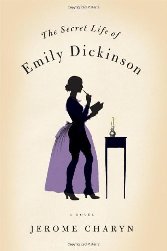The Witch of the South Bronx
 I grew up in a wasteland called the South Bronx. Our nearest precinct was known as Fort Apache. Its cops rarely ventured into the Indian country they were paid to patrol. It was much too dangerous. Gangs tossed Molotov cocktails at whatever cars these cops happened to have. It was our own Wild, Wild East, where crazed dogs wandered through the parks and twelve-year-old kids died of an overdose. I lived in a land of crippling poverty, without books, without any culture other than what we could learn on our own mean streets. But I still managed to survive. I had my own secret sister—Emily Dickinson.
I grew up in a wasteland called the South Bronx. Our nearest precinct was known as Fort Apache. Its cops rarely ventured into the Indian country they were paid to patrol. It was much too dangerous. Gangs tossed Molotov cocktails at whatever cars these cops happened to have. It was our own Wild, Wild East, where crazed dogs wandered through the parks and twelve-year-old kids died of an overdose. I lived in a land of crippling poverty, without books, without any culture other than what we could learn on our own mean streets. But I still managed to survive. I had my own secret sister—Emily Dickinson.I discovered her in junior high school. It was almost by accident . . . or divine will. I had been cutting up in class and my teacher banished me to the school’s furthest outpost—its little library at the very end of the hall. I was meant to sit there for an hour. This library was as futile as the Bronx itself; its shelves were battered and half its books had broken spines. And while I sat, one of the shelves collapsed and spilled these wounded books right into my lap.
And there she was! That daguerreotype of Emily with a ribbon around her neck, taken when she was sixteen or so. I must have stumbled upon some renegade anthology of poems, lost in the wilderness of the Bronx. This anthology didn’t say a word about who she was, and it only had one selection of hers.
Success is counted sweetest
By those who ne’er succeed.
To comprehend a nectar
Requires sorest need.
She could have been talking about every bewildered child in the South Bronx, as if she were a voice out of the whirlwind, our very own witch. And I discovered soon enough that real poverty had a lot to do with a different kind of hunger pain—the poverty of language. That’s why so many of us were doomed to failure. We were wild children in a wild land, cut off from any culture beyond our ghetto streets. And suddenly there was Emily Dickinson, the Queen Recluse of Amherst, who shared her own dilemmas with me.
Behold! I became a reader. I sought out other poems of hers and relished their secrets, their own sore needs. She was the one who understood the strange intimacy of isolation. Like the Queen Recluse, I could feel “The distant strains of triumph,” as they burst upon my own “forbidden ear.”
But she taught me something else—that my mind could wander through that cultural void and fill it up with my own imaginings. “To shut our eyes is Travel,” she wrote in 1870. And that’s what I tried to do in The Secret Life of Emily Dickinson. I wanted to inhabit some of her own sorcery, to bring to life that wonderful witch I remembered from the South Bronx.
-- Jerome Charyn
Jerome Charyn has been teaching film for the past fourteen years at the American University of Paris. His novel, The Green Lantern, was a finalist for the PEN/Faulkner Award and he has also received the Rosenthal Award from the American Academy of Arts and Letters. Charyn’s new novel, The Secret Life of Emily Dickinson, an astonishing work that reveals the passions and heartbreak of America’s greatest poet, will be released by W. W. Norton & Company on February 22nd.






